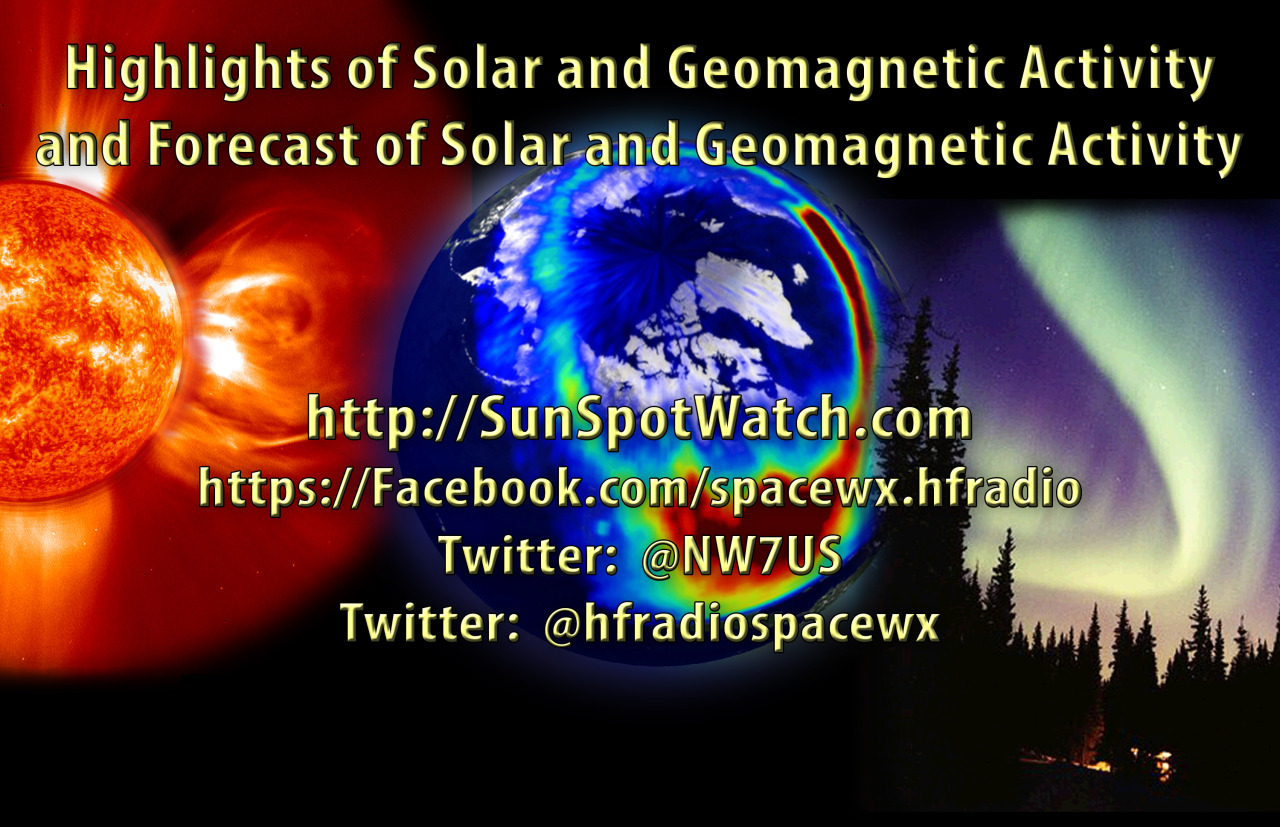 Weekly Propagation Summary – 2016 Feb 29 16:10 UTC
Weekly Propagation Summary – 2016 Feb 29 16:10 UTC
Here is this week’s space weather and geophysical report, issued 2016 Feb 29 0233 UTC.
Highlights of Solar and Geomagnetic Activity 22 – 28 February 2016
Solar activity reached low levels with only C-class flare activity observed this period. Region 2506 (S05, L=224, class/area=110/Dai o 28 Feb) was responsible for nearly all flare activity this period including three low-level C-class flares, the largest of which was a C3/Sf flare at 0500 UTC on 27 Feb. A filament eruption centered near S16E19 (vicinity of Region 2506) was observed in SDO/AIA imagery between 0030-0130 UTC on 18 Feb but no associated coronal mass ejection (CME) was observed in LASCO coronagraph imagery suggesting the bulk of the plasma was reabsorbed. No Earth-directed CMEs were observed this period.
No proton events were observed at geosynchronous orbit.
The greater than 2 MeV electron flux at geosynchronous orbit reached high levels on 22-24 and 28 Feb with moderate levels observed throughout the remainder of the period.
Geomagnetic field activity briefly reached unsettled levels on 23-24 and 26 Feb with quiet conditions observed throughout the remainder of the period under a nominal solar wind regime.
Forecast of Solar and Geomagnetic Activity 29 February – 26 March 2016
Solar activity is expected to be very low with a chance for C-class flares on 29 Feb and 15-26 Mar. Solar activity is expected to increase to low levels with a chance for M-class flares (R1-R2 (Minor-Moderate) Radio Blackouts) on 01-14 Mar due to the return of old Region 2497 (N12, L=240) which produced four M-class flares last rotation.
No proton events are expected at geosynchronous orbit barring any significant flare activity.
The greater than 2 MeV electron flux at geosynchronous orbit is expected to reach high levels on 15-22 Mar, moderate levels on 04-05, 07-08, 13-14, and 23-26 Mar, and at normal levels for the remainder of the period.
Geomagnetic field activity is expected to reach G1 (Minor) geomagnetic storm levels on 14-16 Mar and active levels on 01, 06, and 17 Mar due to the effects of multiple recurrent coronal hole high speed streams (CH HSSs). Quiet or quiet to unsettled geomagnetic field conditions under a nominal solar wind regime are expected for the remainder of the period.
Don’t forget to visit our live space weather and radio propagation web site, at: http://SunSpotWatch.com/
Live Aurora mapping is at http://aurora.sunspotwatch.com/
If you are on Twitter, please follow these two users: + https://Twitter.com/NW7US + https://Twitter.com/hfradiospacewx
Get the space weather and radio propagation self-study course, today. Visit http://nw7us.us/swc for the latest sale and for more information!
Check out the stunning view of our Sun in action, as seen during the last five years with the Solar Dynamics Observatory (SDO): https://www.youtube.com/watch?v=zXN-MdoGM9g
We’re on Facebook: http://NW7US.us/swhfr














